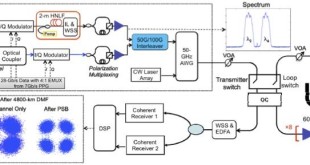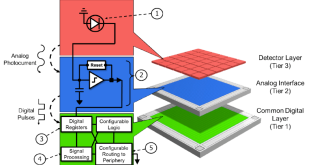The technology environment across the world today is evolving to one where having one country have a technological advantage over another is not just going to be in our future,” said Air Force Gen. Ellen Pawlikowski, commander of the Air Force Material Command headquartered at Wright-Patterson Air Force Base. With the …
Read More »Monthly Archives: July 2018
DARPA developing Very Low Frequency (VLF) systems to provide GPS like position and timing technologies in contested, underwater and underground Environments
The GPS system provides critical positioning capabilities to military, civil, and commercial users around the world. However, in many environments in which military operates (inside buildings, in urban canyons, under dense foliage, underwater, and underground) have limited or no GPS access. It can be significantly degraded or unavailable during solar …
Read More »Military exploring LiFi technology for secure high data rate communications for facilities, vehicles and submarines
The Li-Fi is a wireless communication system in which light is used as a carrier signal instead of traditional radio frequency as in Wi-Fi. Li-Fi is a technology that utilizes a light emitting diode to transmit data wirelessly. LiFi works by switching LEDs on and off within nanoseconds to communicate …
Read More »Advanced hostile fire detection (HFI) technologies to protect aircraft and combat vehicles against small arms, and RAMs
Compact, low cost, accurate hostile fire detection (HFI) solutions are essential to effectively protect aircraft and combat vehicles against small arms, RPGs, mortars, anti-aircraft artillery, and surface to air missiles. Detecting and classifying these types of threats is complicated by many factors including the need for full 360 coverage, requirement …
Read More »DARPA’s DRINQS plans for 10X improvement in High-precision atomic clocks, measuring gravitational fields and quantum information applications.
The emerging quantum revolution offer revolutionary capabilities for military from quantum creptography for hack proof communications to High-precision atomic clocks that can enable timekeeping for navigation and communications with GPS-like performance even in GPS-denied environments. Another important area is quantum computing based on quantum bits, or qubits, which can represent …
Read More »DARPA hybrid analog, digital, photonic and electronic processor technologies for real-time signal intelligence
U.S. military researchers are asking for industry’s help in developing a combination hybrid analog, digital, photonic, and electronic processor to help analyze RF and optical signals for situational awareness. The project seeks to enable U.S. and allied warfighters to understand in near-real-time all the waveform details, source type and class, …
Read More »Swedish Defence Research Agency (FOI) developing innovative technologies for military and security
Swedish Defence Research Agency (Swedish: Totalförsvarets forskningsinstitut, FOI) is a government agency in Sweden for defence research that reports to the Ministry of Defence The activities of FOI include research, development of technology and analysis, primarily for military defence, but also for civil emergency, security and other civilian applications. …
Read More »Armed conflicts can be prevented or reduced using Early Warning tools to analyze, track, and forecast fragility and conflict
In 2017, Deadly crisis zones have rightly been in the news: The crisis in Yemen, in which Saudi Arabia used equipment provided by the US and UK to bomb noncombatants and blockade supplies, has seen the civilian death toll climb above 5,000; civil conflict still rages in Afghanistan and Nigeria; …
Read More »DARPA developing software-reconfigurable Passive and Active (LIDAR) imaging sensors from ultraviolet (UV) through very long-wave infrared (VLWIR)
Digital cameras use a focal plane array (FPA) to convert light energy into electrical energy that can be processed and stored. The FPA is a two-dimensional (2-D) array of photodetectors (or pixels) fabricated on an electro-optical material. Modern digital cameras contain FPAs that have pixel counts on the order of …
Read More » International Defense Security & Technology Your trusted Source for News, Research and Analysis
International Defense Security & Technology Your trusted Source for News, Research and Analysis








